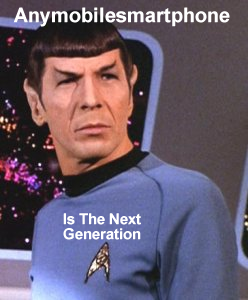In the future, virtual reality won't require strapping a bulky contraption to your head.
Instead, imagine stepping into an empty room and then suddenly seeing life-size, 3-D images of people and furniture. Or looking down at a smartwatch and seeing virtual objects float and bounce above the wrist, like the holographic Princess Leia beamed by R2-D2 in the movie "Star Wars."
A key to this future may lay in Carlsbad, Calif., where startup Ostendo Technologies Inc. has spent the past nine years quietly working on miniature projectors designed to emit crisp videos and glasses-free 3-D images for smartphones and giant screens.
Other companies have shown they can project floating images that appear to be holograms, but many involve large machines employing a system of mirrors to direct light with limited viewing angles. For instance, the lifelike image of the late rapper Tupac Shakur, which graced the Coachella music festival stage in 2012, was a combination of computer graphics and video projection that relied on visual effects first designed in the 19th century.
Ostendo's projectors, in contrast, are roughly the size of Tic Tacs, powered by a computer chip that can control the color, brightness and angle of each beam of light across one million pixels.
One chipset, small enough to fit into a smartphone, is capable of projecting video on a surface with a 48-inch diagonal. A patchwork of chips, laid together, can form far larger and more complex images. The first iteration of the chip, which is scheduled to begin shipping next year, will only project 2-D videos, but the next version, expected to follow soon after will feature holographic capability, according to Ostendo's chief executive and founder, Hussein S. El-Ghoroury.
"Display is the last frontier," said Dr. El-Ghoroury, who in 1998 sold CommQuest Technologies, a mobile chipset company, to International Business Machines Corp. for about $250 million in cash and stock. "Over the years, processing power has improved and networks have more bandwidth, but what is missing is comparable advancement in display."
The race to disrupt the screen is intensifying as both upstarts and technology giants try to find new ways to bring content to life.
Microsoft Corp. and Advanced Micro Devices Inc. are both working on their own virtual reality rooms, building a complex system of projectors and computers. Hewlett-Packard Co. recently spun out a company called Leia, that like Ostendo, is trying to bring 3-D imaging to smartphones. Meanwhile, Facebook Inc. agreed in March to spend $2 billion to buy Oculus VR Inc., maker of the Oculus Rift headset that pulls users into 360-degree virtual environments.
Facebook CEO Mark Zuckerberg was, in part, convinced of the value of virtual reality after he accidentally tried to set down a real world object on a virtual table while testing the Oculus Rift, forgetting for a moment that the table didn't exist in the real world, according to a person with knowledge of the matter.
Ostendo, tucked away in Southern California, is little-known but has raised $90 million from venture-capital firms and Peter Thiel, Facebook's first outside investor, and has secured some $38 million in government research and development contracts. A large bulk of that has come from the Defense Advanced Research Projects Agency, or Darpa, the government's futurist agency that worked on the predecessor to the Internet and self-driving cars.
That capital has given Dr. El-Ghoroury, an immigrant from Egypt, the luxury to work for nearly a decade undisturbed. Ostendo now employs about 115 people, including scientists suited in scrubs and goggles who handle fragile nanotechnology equipment at a high-tech semiconductor lab.
The long effort has yielded the Ostendo Quantum Photonic Imager, an appropriately sci-fi-sounding name, which fuses an image processor with a wafer containing micro light-emitting diodes, or LEDs, alongside software that helps the unit properly render images.
During a recent test reviewed by The Wall Street Journal, Ostendo showed a working prototype: a set of six chips laid together that beamed a 3-D image of green dice spinning in the air. The image and motion appeared consistent, irrespective of the position of the viewer.
According to Ramesh Raskar, an associate professor at the Massachusetts Institute of Technology, who is working on 3-D displays for MIT's Media Lab, Ostendo's advantage and the key to its 3-D capability is its resolution. The Retina display on Apple Inc.'s iPhone, for example, has about 300 dots per inch, Ostendo's chips are at about 5,000 dots per inch.
Ostendo, which says it has several opportunities with major handset manufacturers, expects the first 2-D projector unit to be in the hands of consumers before the summer of 2015. With a lens attached, it will be less than 0.5 cubic centimeters, roughly the size of the camera in the iPhone. It also expects to begin manufacturing the second version of the chip, with 3-D capability, in the second half of 2015. The cost to the consumer should be about $30 a chip, Ostendo estimates.
Dr. El-Ghoroury said the company still needs to improve the 3-D product and is aiming to make the pixels even smaller to achieve higher resolution.
Ultimately, the larger vision is to have Ostendo's chips everywhere electronic displays are needed, whether it is a glasses-free 3-D television screen, a smartwatch, or tables that can project hologram-like images.
So what happens in a world where 3-D and virtual reality is everywhere? Dr. El-Ghoroury predicts people's relationship with technology will change and breed a wave of business opportunities, on scale with the introduction of the iPhone.
"Imagine if everything coming back to you was in 3-D--all of your shopping, all of your gaming, every way you retrieve data," he said.


















